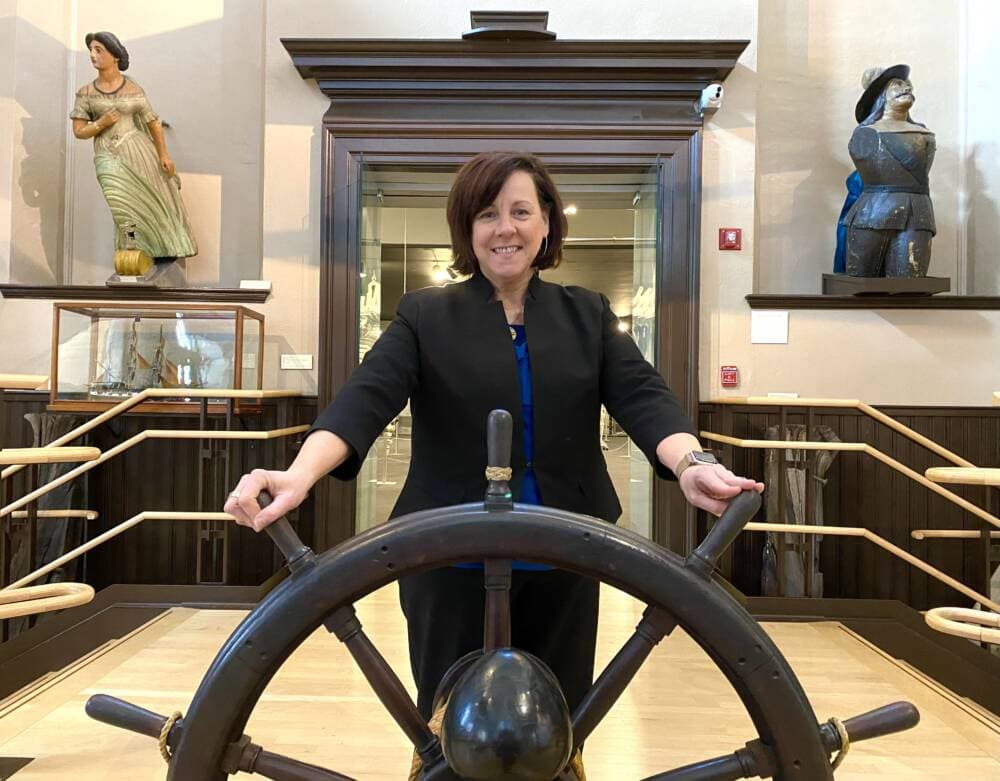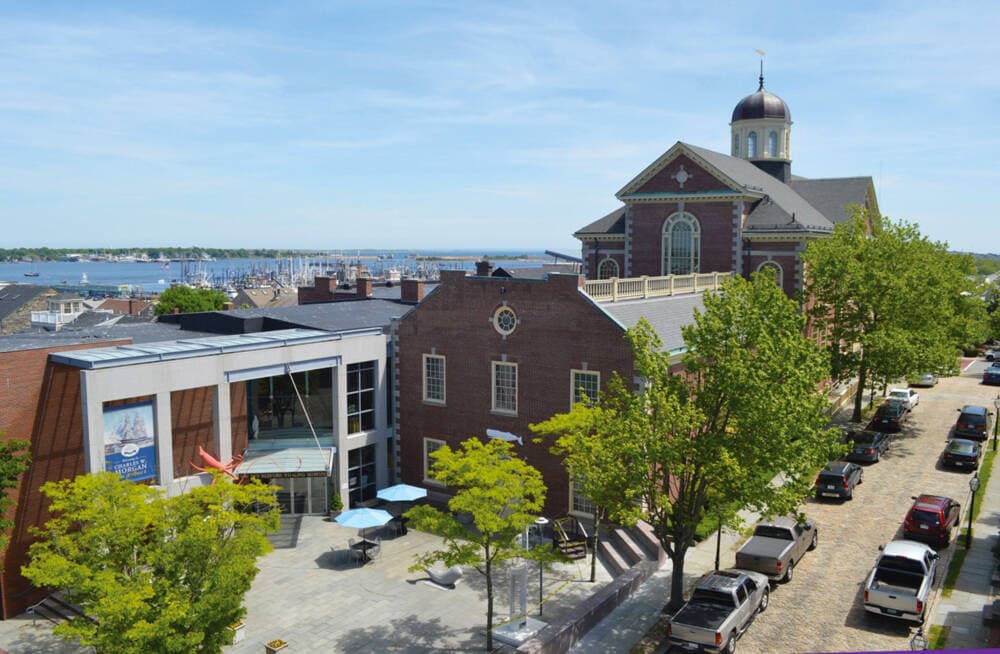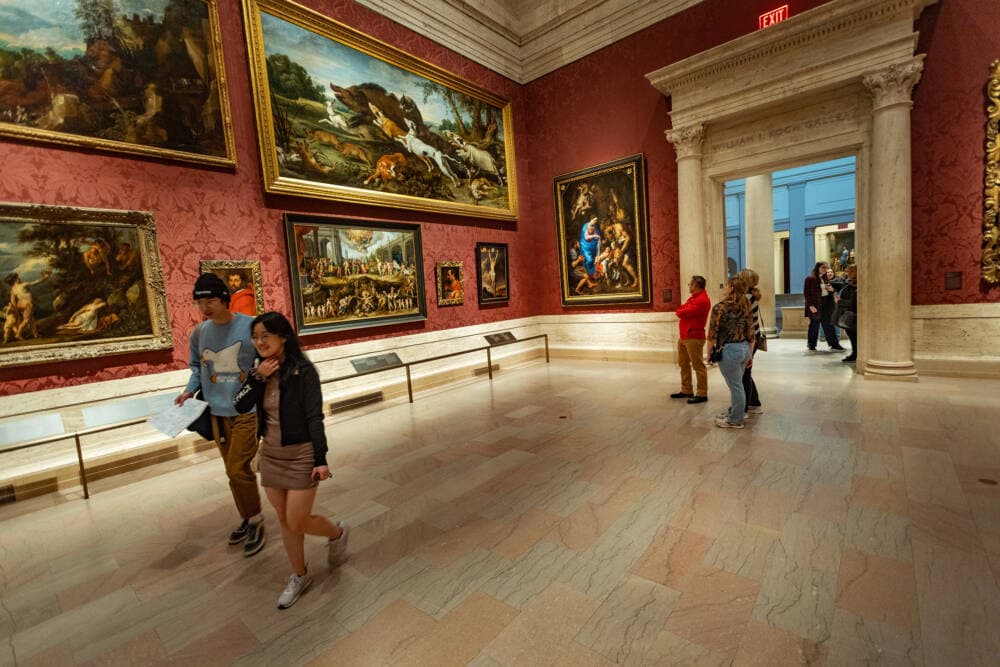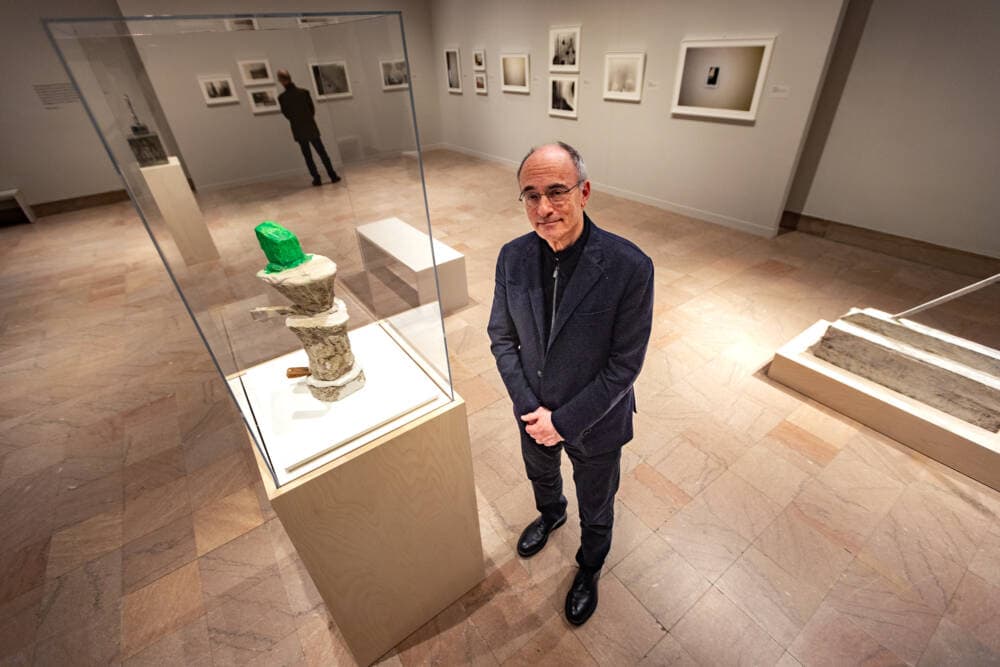
How two museums are resetting for a post-pandemic world
On May 11, the COVID-19 public health emergency officially comes to an end. But recovery in the pandemic's wake continues to challenge arts and cultural organizations. Since shuttering for months in 2020, museums of all sizes have struggled to regain their financial footing and their audiences. According to the American Alliance of Museums, attendance was down nearly 40% in 2021, and operating incomes continued to sink at institutions across the country.
Jump to 2023, and museum leaders are forging new models for survival, and rethinking their roles, in a much-changed world. Two of them — in two different Massachusetts cities — have been facing similar, yet different dilemmas.
Staying connected at the Whaling Museum
Since 1997, “Moby-Dick” fans have gathered at New Bedford's largest cultural institution for an annual, 25-hour reading of Herman Melville's iconic tome. But, when the in-person marathon returned to the Whaling Museum this past January for the first time since the pandemic hit, museum president and CEO Amanda McMullen said the beloved event felt — and sounded — different.
After award-winning “Orange Is the New Black” actress Taylor Schilling delivered that famous opening line, “Call me Ishmael,” the audience applauded. It was unusual, McMullen recalled. Then, the clapping continued to punctuate each reader's stint at the podium. Those bursts baffled some marathon diehards, but for McMullen, the cheering seemed symbolic. “I think it was the energy — like we have made it,” she said, “and this feeling of calm seas. The ship's come back into port.”
Like a tsunami, pandemic shutdowns upended museums overnight. Then, without visitors for months, ticket revenue plunged. “That year was tough, 2020, navigating that,” McMullen recalled. “We had like 17,000 visitors for the whole year when we should be upwards way closer to 80, 90, 100,000.”

Even with blows to the budget, and heaps of economic uncertainty, McMullen was determined to retain her staff of 47 employees. In return, she said they rallied to create a ton of online content, including digital learning tools for New Bedford teachers and students. Now hybrid offerings are here to stay. “The 'Moby Dick' marathon is a great example of that,” McMullen explained. “We get a couple thousand people through the doors, but we actually get over 10,000 people from around the world. And that has just picked up steam with live streaming.”
But to survive, museums need streams of people inside their galleries. Ticket sales generate about 30% of the Whaling Museum's income. McMullen is relieved attendance is almost back to pre-pandemic levels. She believes steady marketing and giving away hundreds of memberships to New Bedford residents over the past few years have helped keep the public connected to the museum.
McMullen said this history, science and art institution was founded in 1903 with a mission to serve the local community. That responsibility felt more urgent in 2020. “There was the health crisis, an inevitable financial crisis, a racial reckoning,” she said. “You can't come out of that year as an institution that should reflect the community without making some strategic decisions to dive deeper on that.”
Advertisement
One decision was to go full-throttle with an oral history project called “Common Ground.” Staff members have been fanning out with a mobile recording booth to capture stories from residents of New Bedford, a city known for its large Portuguese-American population. Now, their voices fill a gallery and a growing online archive. “Museums are often saying we're the expert and we can tell you who you are,” McMullen said. “And this is really co-curated with the community.”

Making the museum accessible to the community is a priority. Another is attracting audiences from beyond New Bedford. A report commissioned by the museum found the institution and its visitors, including tourists, contributed $10 million to the local economy in 2019.
During the pandemic, McMullen's team raised more than $1 million to buy a building across the street. It's a game-changer for the Whaling Museum's longevity, she said, because it will enable the organization to host major exhibitions in a big, new space. “That is going to be not only something that we can be deeply proud of but will also be a driver for bringing more people into the community.”
After weathering the pandemic storm, McMullen likes to refer to her institution in New Bedford as “the little museum that could.” And she knows larger museums have faced bigger, more complex problems.
Resetting at the MFA

“I do think smaller institutions are, by very nature, more agile and responsive,” Museum of Fine Arts director Matthew Teitelbaum said.
The MFA is a behemoth in terms of building, budget, staff, exhibitions and visitation. On a recent weekday, the museum's corridors were bustling. “Our trajectory is going entirely in the right direction — more and more people,” Teitelbaum said while climbing the building's grand staircase. “There's nothing that a museum director likes more than having galleries filled with visitors.”
But in fiscal year 2022, while operating with reduced hours, the MFA's attendance was 632,000. That's about half of what it was before the pandemic. Now, the museum has surpassed that figure, with current attendance numbers 34% higher than this last year.
“I don't think we're alone,” Teitelbaum said. “We're an institution that's still, what I would call, resetting.”
Part of that involves reassessing possible barriers, like ticket prices and limited hours. To drive audience, Teitelbaum said the museum is investing in a few crucial areas, especially programming. The MFA's "Late Nites" have returned, and enticing shows, including “Hokusai: Inspiration and Influence,” are on the walls.

As Teitelbaum walked through the newly renovated Greek and Roman galleries, he said more than 50% of the antiquities on display weren't on view before the pandemic. These objects are helping to tell updated narratives that bridge ideas from the past to the world today. “I would say the museum is moving more and more towards connecting to issues of its time," Teitelbaum added, "whether it's through contemporary art or through historical art.”
The ways exhibitions are conceived and executed are also changing at the MFA. In the before times, curators relied more heavily on expensive loans from other institutions. Now, Teitelbaum said, they're crafting an increased number of stories through the museum's collection of nearly 500,000 objects. “The reason for that is, partly, because the costs of international travel insurance, air, airfreight, all of that stuff has gone up in ways that are hard to control,” he explained.
There's also a new focus on generating income through exhibitions developed in-house that can travel to other institutions. “So it's something we've done for many many years, and I would say that we have redoubled our efforts,” Teitelbaum said. “And we hope we can use the brand of Boston and the MFA to increase the revenue.”
Dramatic revenue losses forced the MFA to lay off 57 of its 626 employees in 2020. Another 56 took early retirement. Later that year, museum staff voted to unionize, and after 18 months of negotiations, the MFA Union ratified its first contract in June 2022. Now Teitelbaum said rebuilding staff, along with fostering inclusivity and a welcoming environment, are critical for realizing new initiatives.
The MFA did move forward on a rebranding campaign last year with the tagline, “Here all belong.” Teitelbaum acknowledged the museum continues to reckon with a 2019 incident involving a group of students who allege they were racially profiled by other visitors and security guards. “I think that we are, for sure, a more aware institution,” he said. “Our processes to engage with audiences, particularly with school groups, has tightened and has changed.”
What hasn't changed is Teitelbaum's optimism about the future of museums. He believes they play a vital role in society, and evolving in a post-pandemic world will take time for museums — no matter the size.
Correction: An earlier version of this story did not accurately describe the students' allegations in 2019 incident at the MFA. The post has been updated. We regret the error.
This article was originally published on May 02, 2023.
This segment aired on May 2, 2023.
